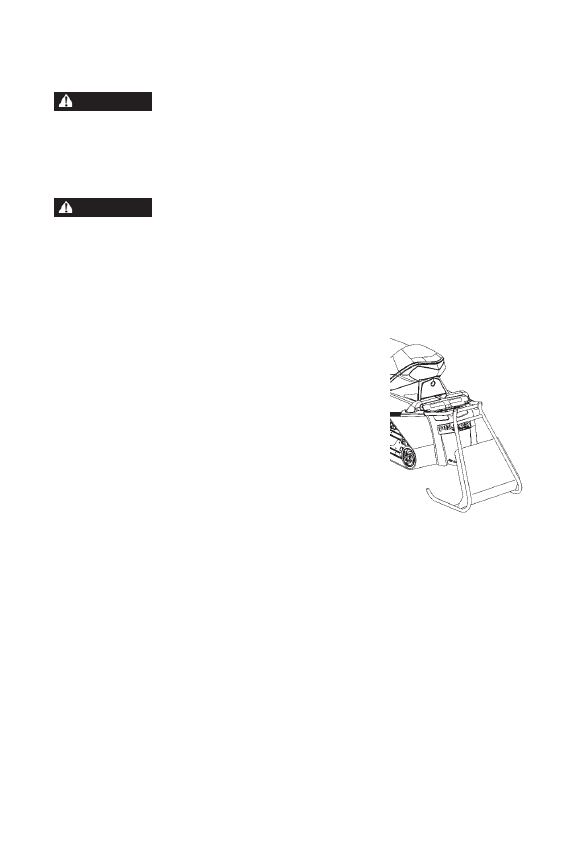Snowmobile Polaris 600 IQ Racer (2015 year). Instruction - part 13

55
OPERATION
Track Warm-Up
A loose track or flying debris could cause serious injury or death. Stand clear of
the front of the snowmobile and the moving track. Never hold the snowmobile up
or stand behind it while warming up the track. Do not use excessive throttle
during warm-up or when the track is free-hanging. Be sure the rear support is
stable.
Use of traction products such as studs, ice growsers, etc. will increase the
possibility of track damage and/or failure. This could cause loss of control,
resulting in serious injury or death. Always inspect for track damage before
operating the snowmobile.
Follow these steps to ensure proper warm-up of the engine, drive train
and track.
1. Use an appropriate stand to securely
support the rear of the snowmobile at
the rear bumper. The track should be
about 4 inches (10 cm) off the ground.
2. Start the engine and allow it to warm up
two to three minutes.
3. Depress the throttle abruptly and allow
the track to rotate several revolutions.
TIP: It will take longer to warm up the track suffi-
ciently during colder outdoor temperatures.
4. Release the throttle, apply the brakes,
shut off the engine and lower the machine to the ground.
5. Grasp the skis by their front loops and move them from side to side
to loosen snow and ice.
Slide Rail and Track Cooling
NOTICE: Inadequate cooling and lubrication will lead to overheating of the slide
rail and track, resulting in premature wear and failure. Reduce speeds
and frequently drive into fresh snow to allow adequate cooling and
polishing of the slide rail and track surfaces. Avoid operating on ice,
hard-packed surfaces or roads.
WARNING
WARNING